How to Drill into Stucco Without Cracking It: Expert Tips

Drilling into stucco can be a tricky task, as this popular exterior finish is prone to cracking if not done properly. However, with the right tools and techniques, you can successfully drill into stucco without damaging it. In this article, we will share expert tips on how to drill into stucco without cracking it.
First and foremost, it’s important to choose the right drill bit for the job. A masonry or carbide-tipped drill bit is ideal for drilling into stucco, as they are designed to handle hard surfaces. Make sure the drill bit you select is the appropriate size for the hole you need to create.
Before you start drilling, it’s crucial to locate the studs or other structural supports behind the stucco. Using a stud finder or a tapping technique can help you identify these areas, ensuring that you have a solid backing for your drill holes. This will reduce the risk of cracking or compromising the integrity of the stucco.
When it comes to drilling, take it slow and steady. Applying too much pressure or drilling too quickly can increase the chances of cracking the stucco. Start by creating a small pilot hole and then gradually increase the size as needed. Use a constant and gentle pressure, letting the drill bit do the work.
Remember to always wear safety goggles and gloves when drilling into stucco to protect yourself from flying debris. Additionally, it’s a good idea to have a vacuum or brush nearby to remove any dust or debris that accumulates during the drilling process.
Proper Technique for Drilling into Stucco: Step-by-Step Guide
Step 1: Gather the necessary tools and materials
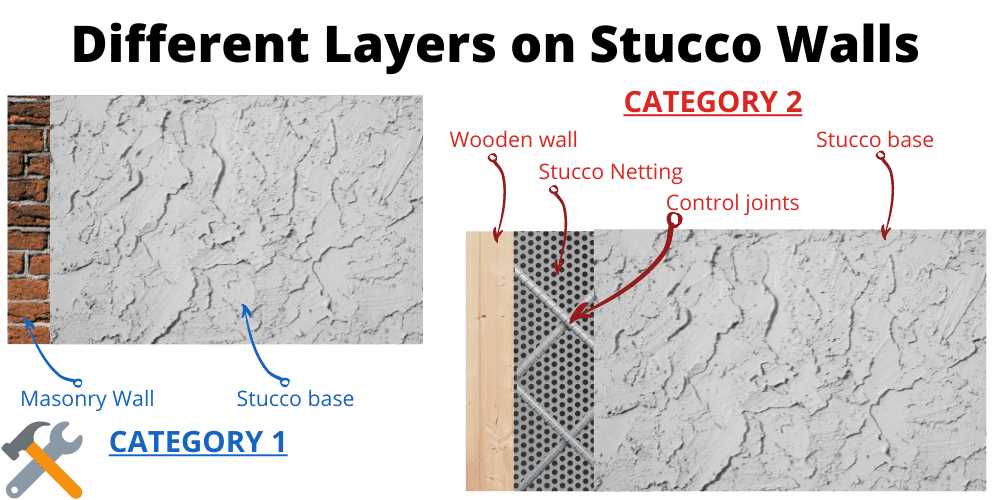
Before you begin drilling into stucco, make sure you have all the necessary tools and materials on hand. You will need:
- A power drill
- Masonry drill bits
- Masking tape
- Pencil or marker
- Protective eyewear
- Dust mask
Step 2: Mark the drilling location
Use a pencil or marker to mark the exact spot where you want to drill into the stucco. Take measurements and make sure the mark is level, if necessary.
Step 3: Prepare the drill and drill bit
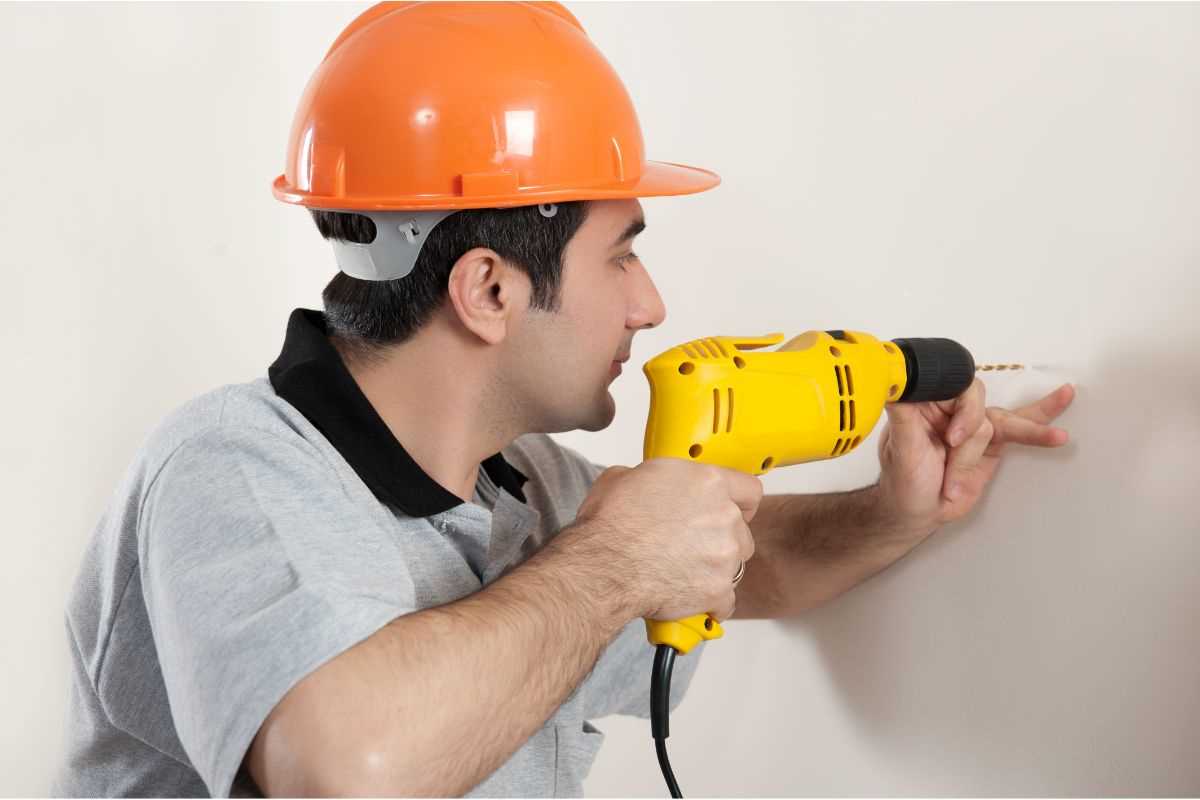
Insert the appropriate masonry drill bit into your power drill. Make sure it is securely attached.
Step 4: Secure the stucco with masking tape
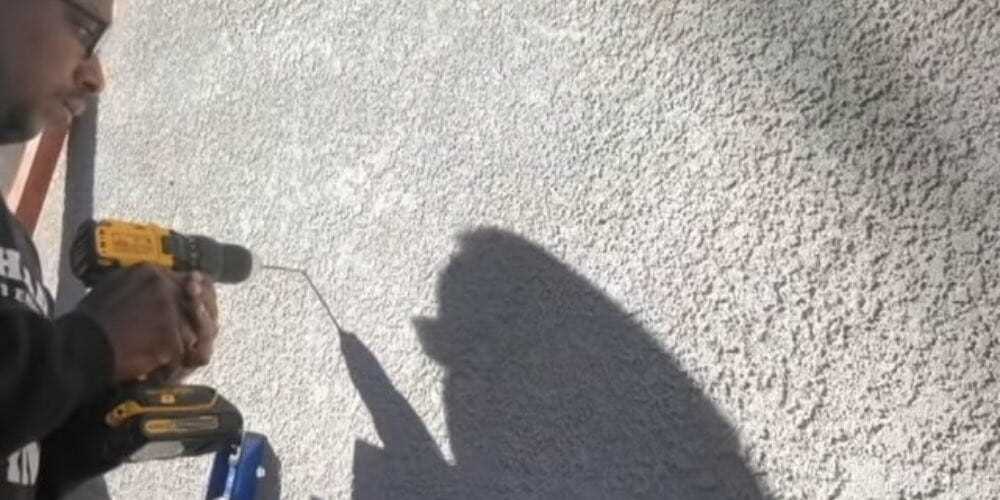
To minimize the risk of cracking the stucco, apply strips of masking tape around the drilling area. This will help provide extra support and prevent the drill bit from slipping or wandering.
Step 5: Start drilling
Hold the drill perpendicular to the stucco surface and apply steady pressure as you begin drilling. Use a slow and controlled speed to prevent any unnecessary damage to the stucco.
Step 6: Remove the drill bit often
While drilling, it is important to periodically remove the drill bit from the hole to clear away any accumulated dust or debris. This will help maintain proper drilling performance.
Step 7: Drill to the desired depth
Continue drilling until you reach the desired depth. Be careful not to over-drill, as this can cause the stucco to crack or chip.
Step 8: Clean up the drilling area
Once you have finished drilling, remove the masking tape and clean up any dust or debris from the drilling area. Use a soft brush or cloth to gently sweep away any remaining residue.
Step 9: Proceed with your project
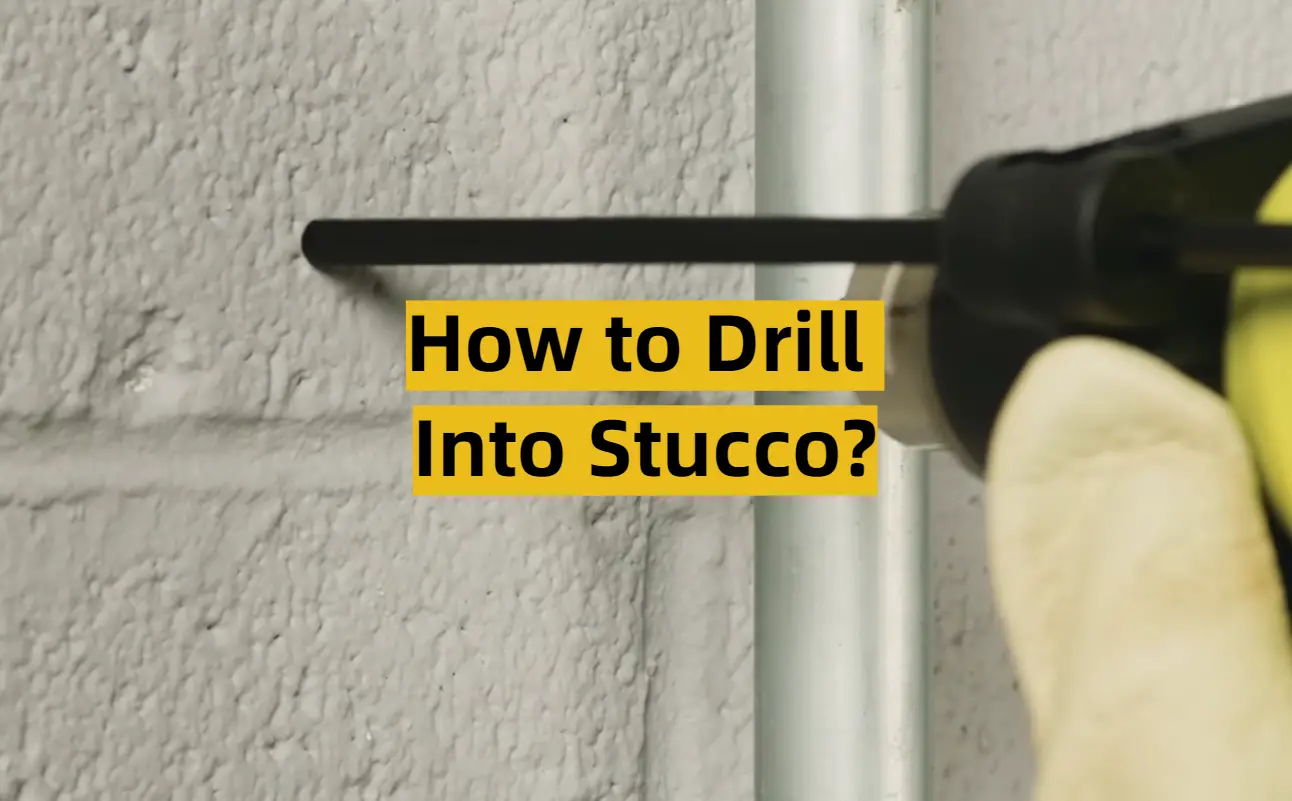
Now that you have successfully drilled into the stucco without cracking it, you can proceed with your intended project, whether it be hanging a decoration or installing a fixture.
Remember, drilling into stucco requires patience and precision. By following these step-by-step instructions and using the proper technique, you can avoid damaging the stucco and achieve professional-looking results.
Choosing the Right Drill Bit: Materials and Sizes
When it comes to drilling into stucco without cracking it, choosing the right drill bit is crucial. The material and size of the drill bit can greatly affect the success of your project and prevent any unwanted damage to the stucco surface. Here are some key factors to consider when selecting a drill bit:

Materials
The materials used in drill bits can vary, and each material has its own advantages and disadvantages. Here are some common materials used in drill bits:
- High-Speed Steel (HSS): HSS drill bits are the most common and affordable option. They are suitable for drilling into soft stucco surfaces but may dull quickly when used on harder stucco.
- Carbide Tipped: Carbide-tipped drill bits are more durable and can handle drilling into harder stucco surfaces. They are more expensive but offer better performance and longevity.
- Diamond: Diamond drill bits are specifically designed for drilling into very hard surfaces like concrete or stone. They are the most expensive option but provide excellent results when drilling into tough stucco.
Sizes
The size of the drill bit you choose will depend on the specific project requirements. Here are some general guidelines for selecting the right size:
- Diameter: The diameter of the drill bit should be slightly smaller than the size of the anchor or screw you plan to use. This ensures a snug fit and minimizes the risk of cracking.
- Length: The length of the drill bit should be sufficient to drill through the stucco and reach the desired depth. Ensure that the drill bit is long enough to accommodate the anchor or screw without coming out from the other side of the stucco.
Summary
Choosing the right drill bit is essential for drilling into stucco without cracking it. Consider the material and size of the drill bit based on the stucco’s hardness and the project requirements. Remember to use a drill bit that is slightly smaller in diameter than the anchor or screw and ensure that the length is appropriate for the desired depth. Taking these factors into account will help you successfully drill into stucco without causing any damage.
Preparing the Drill and Stucco Surface: Cleaning and Marking
Before drilling into stucco, it’s important to properly prepare both the drill and the stucco surface. This will help ensure a clean and accurate hole without cracking the stucco. Follow these steps to clean and mark the surface:
- Clean the surface: Use a soft brush or broom to remove any loose dirt, dust, or debris from the stucco surface. It’s important to have a clean surface to prevent any interference with the drill and to allow for a secure attachment.
- Mark the drilling spot: Use a pencil or marker to mark the exact spot where you want to drill. This will help you drill accurately and avoid any unnecessary holes. Measure and mark the location carefully, taking into account any specific guidelines or requirements for your project.
- Protect surrounding areas: If there are any objects or areas surrounding the drilling spot that you want to protect, cover them with a drop cloth or masking tape. This will prevent any damage from debris or accidental slip of the drill.
- Check for utilities: Before drilling, it’s important to check for any hidden utilities or wiring behind the stucco surface. Use a stud finder or consult with a professional to ensure you don’t accidentally drill into any electrical wires or pipes.
- Secure the stucco: If the stucco is loose or fragile, it’s important to reinforce it before drilling. Use an adhesive or filler specifically designed for stucco to strengthen the area around the drilling spot. This will help prevent cracking or crumbling of the stucco during the drilling process.
By following these preparation steps, you’ll be able to drill into stucco without cracking it. Taking the time to clean and mark the surface, as well as ensuring the drill and stucco are properly secured, will result in a successful and professional-looking installation or repair. Remember to always exercise caution and use the appropriate tools and techniques when working with stucco.

Essential Tools for Drilling into Stucco: What You’ll Need
1. Drill
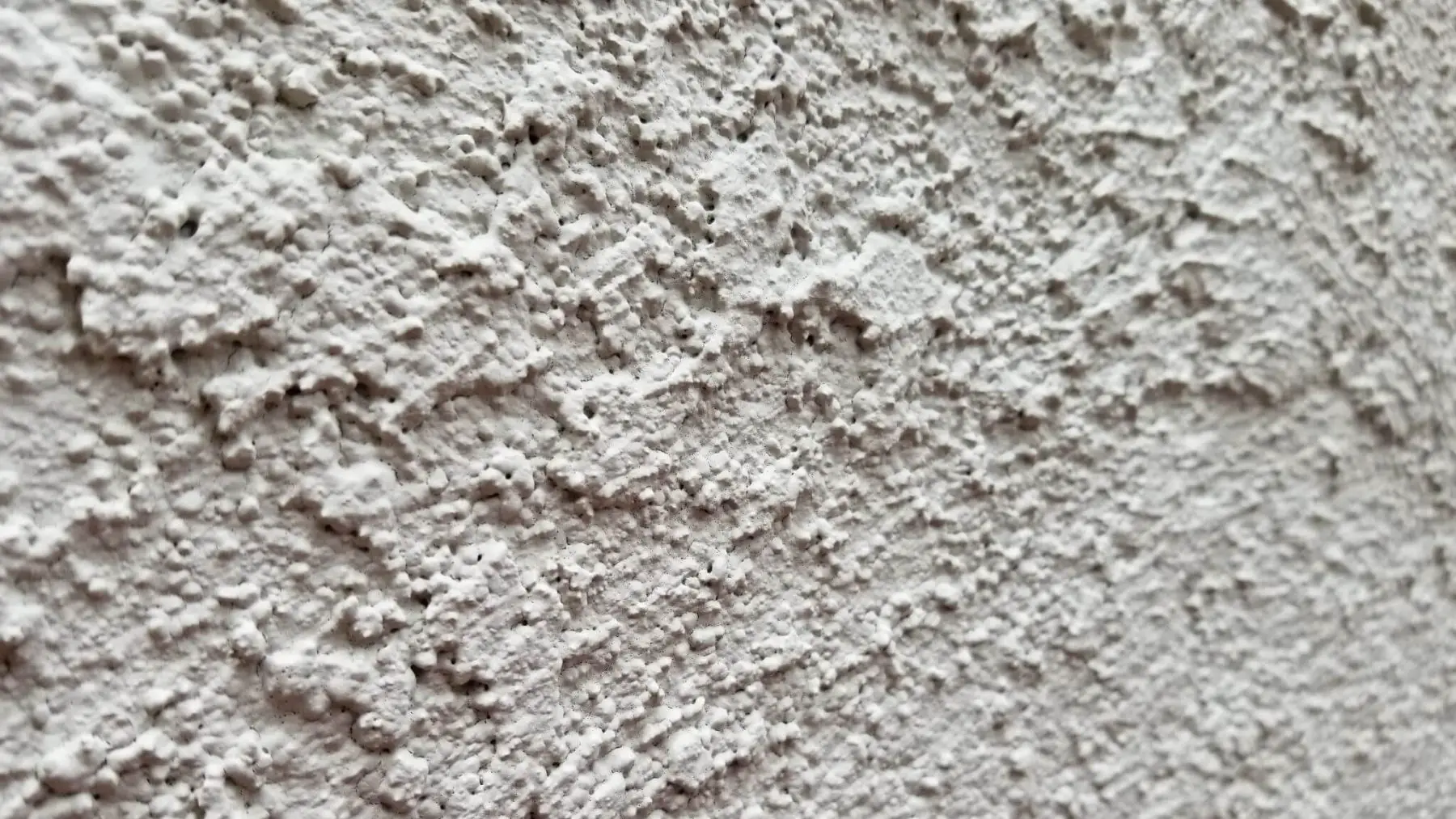
A corded drill or a cordless drill with enough power to handle stucco is essential. Look for a drill with variable speed settings and a hammer drill function, as this will make drilling into stucco easier.
2. Masonry Drill Bits
Regular drill bits won’t be strong enough to penetrate stucco. You’ll need masonry drill bits made from carbide or diamond tips. These bits are designed to handle the hard surface of stucco and provide clean, efficient drilling.
3. Dust Mask
Drilling into stucco can create a lot of dust. Protect your lungs by wearing a dust mask or respirator while drilling. This will help prevent inhalation of stucco particles and other harmful substances.
4. Safety Glasses
When drilling into stucco, flying debris can pose a risk to your eyes. Wear safety glasses to protect your eyes from any debris that may be generated during drilling.
5. Tape Measure
Accurate measurements are important when drilling into stucco. Use a tape measure to determine the precise location for your holes and ensure they are spaced correctly.
6. Marking Tool
Once you’ve measured and marked the location for your holes, use a marking tool such as a pencil or a marker to clearly indicate where you will be drilling. This will help ensure accurate placement of your holes.
7. Level
For drilling multiple holes, it’s important to keep them level and evenly spaced. Use a level to make sure your holes are straight and aligned properly.
8. Anchors and Screws
If you’ll be hanging something on your stucco, you’ll need anchors and screws to secure it. Choose anchors and screws that are suitable for stucco and the weight of the object you’ll be mounting.
9. Protective Barrier
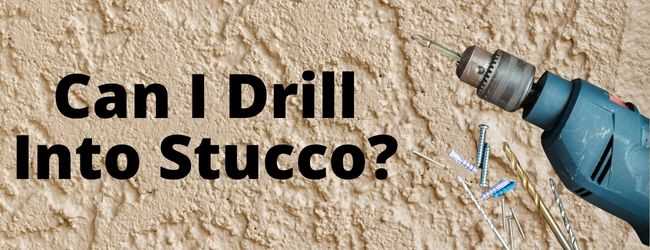
Before drilling into stucco, it’s a good idea to place a protective barrier such as a dropcloth or tarp to catch any debris or prevent damage to the surrounding area.
10. Extension Cord (if using a corded drill)
If you’ll be using a corded drill, make sure you have a suitable extension cord that can reach your drilling area. Ensure the cord is in good condition and rated for outdoor use.
Having these essential tools on hand will make your stucco drilling project easier and more successful. Make sure to follow safety precautions and take your time to ensure accurate and clean holes in the stucco surface.
Tips for Avoiding Cracks: Slow and Steady Wins the Race
1. Prepare the Surface
Before you start drilling into stucco, it is important to properly prepare the surface to minimize the risk of cracking. Begin by cleaning the area around the drilling site to remove any dirt, dust, or loose debris. You can use a stiff brush or a vacuum cleaner to accomplish this. Additionally, make sure the stucco is in good condition and free from any significant cracks or damage that may cause further issues.
2. Use the Right Drill Bit
Choosing the right drill bit is crucial to avoid cracking the stucco. It is recommended to use a masonry drill bit that is specifically designed for drilling into stucco and other similar materials. These drill bits have a carbide tip that can easily penetrate the stucco without causing cracks or damage. Avoid using general-purpose drill bits or ones that are not designed for masonry work.
3. Start with a Pilot Hole
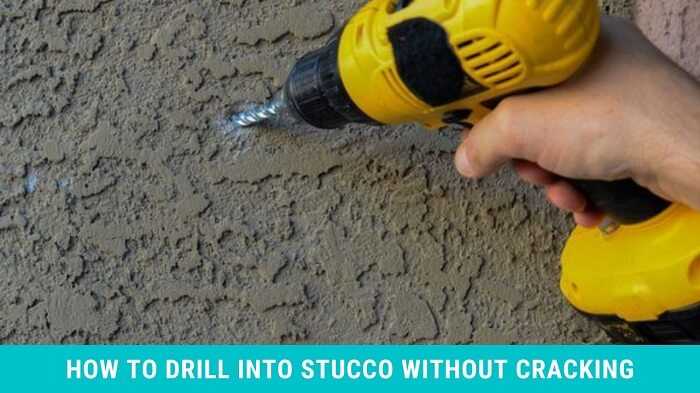
Creating a pilot hole before drilling into your stucco can help prevent cracks. Start by using a small drill bit, such as a 1/8-inch one, to gently drill into the stucco. This pilot hole will serve as a guide for your larger drill bit and reduce the amount of pressure and stress applied to the stucco surface, minimizing the risk of cracks.
4. Drill at a Controlled Speed
Drilling into stucco at a slow and controlled speed is essential to avoid cracking. Rapid or forceful drilling can generate excess heat and pressure, which can lead to cracks in the stucco. Instead, set your drill to a low speed and apply steady, even pressure to gradually penetrate the stucco surface. Take your time and let the drill do the work without forcing it.
5. Support the Back of the Stucco
Providing support to the back of the stucco while drilling can help prevent cracks. You can use a piece of scrap wood or a small block to support the area being drilled. Place the support behind the stucco to distribute the pressure and reduce the likelihood of cracks forming. This is particularly important when drilling near the edges or corners of the stucco.
6. Use a Hammer Drill for Tougher Stucco
If you have particularly tough stucco or are drilling into a thicker layer, consider using a hammer drill. Hammer drills combine rotary drilling with a hammering action, making it easier to penetrate harder materials. This can help reduce the amount of force required to drill into the stucco and minimize the risk of cracking.
7. Take Breaks
Drilling into stucco can be a time-consuming process, especially for larger holes or multiple drillings. It is important to take breaks and let both the drill and the stucco cool down. This helps prevent overheating, which can compromise the integrity of the stucco surface and increase the risk of cracking.
8. Practice Patience
One of the most important tips for avoiding cracks when drilling into stucco is to practice patience. Rushing the process or using excessive force can result in unwanted cracks. Take your time, follow the steps mentioned above, and proceed with caution. Slow and steady drilling will minimize the risk of cracking and help you achieve successful results.
By following these tips, you can drill into stucco without cracking it. Remember to always prioritize safety and take proper precautions when using power tools.
Best Practices for Anchoring: Using Wall Anchors and Screws
1. Choose the Right Wall Anchor
When drilling into stucco, it’s essential to use the appropriate wall anchor for the weight and size of the object you are hanging. There are various types of wall anchors available, such as plastic anchors, metal anchors, and toggle bolts. Plastic anchors work well for lighter objects, while metal anchors and toggle bolts are better for heavier items.
2. Preparing the Drill Hole
Prior to drilling, mark the desired location on the stucco surface using a pencil or marker. Use a stud finder to check for any underlying studs or electrical wires. Once you confirm that it’s safe to drill, use a masonry bit that matches the diameter of the wall anchor. Ensure that the drill is set for rotary drilling mode and avoid using hammer action, as it can crack the stucco.
3. Inserting the Wall Anchor
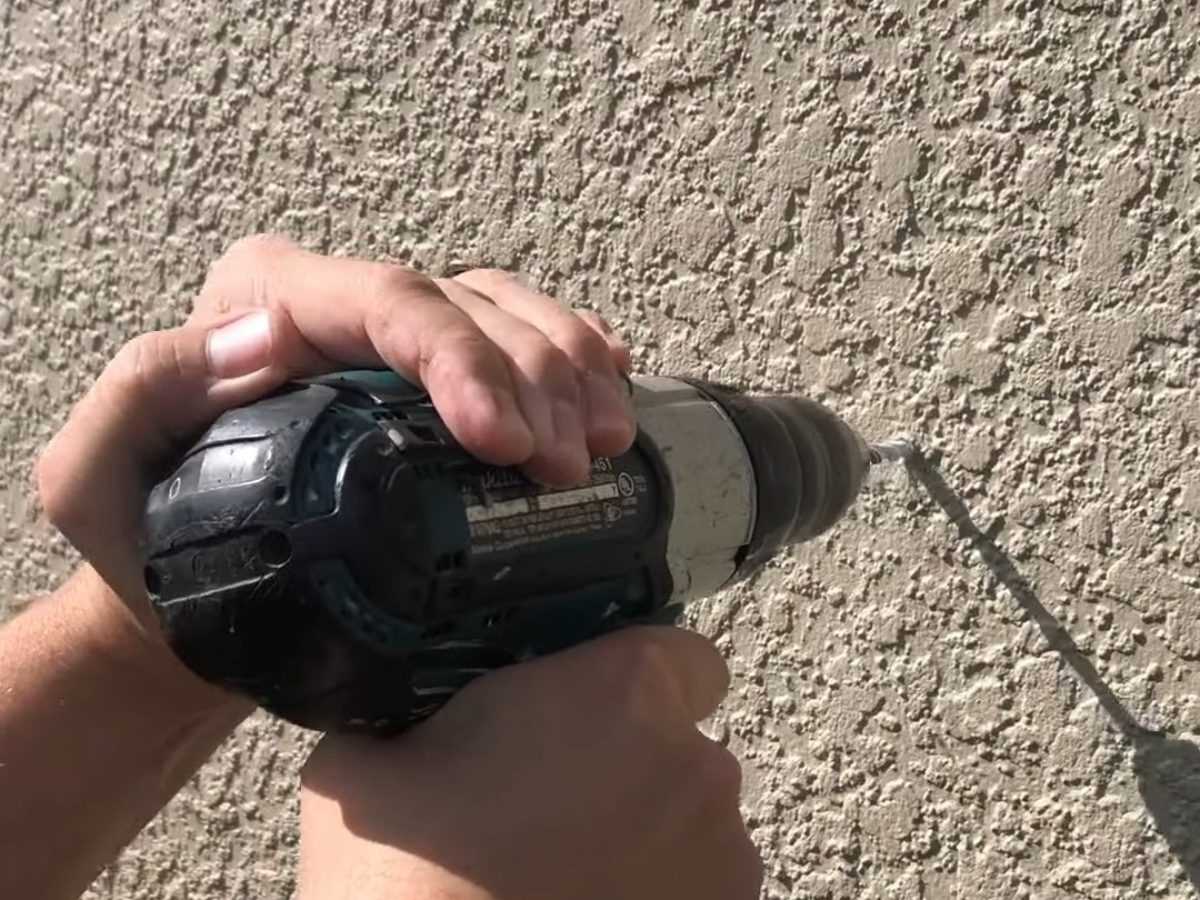
With the drill hole prepared, insert the wall anchor into the hole by tapping it gently with a hammer. The anchor should fit snugly but not too tightly. If necessary, use a screwdriver to twist the anchor into place until it is flush with the stucco surface.
4. Securing the Screw
Once the wall anchor is in place, line up the object you are hanging with the anchor and insert the screw through the mounting hole. Use a screwdriver or drill to tighten the screw. Be careful not to over-tighten, as it may cause the stucco to crack. Ensure that the object is securely attached to the wall before removing any supporting pressure.
5. Additional Tips
- For larger and heavier objects, consider using multiple wall anchors spaced apart to distribute the weight more evenly.
- If you encounter resistance while drilling, stop immediately to avoid damage to the stucco surface or drill bit. Check for any underlying studs or obstructions before drilling in a different spot.
- Apply a small amount of silicone caulk around the drilled hole before inserting the wall anchor to provide added water resistance. This is particularly important for outdoor installations.
By following these best practices for anchoring in stucco, you can ensure a secure and long-lasting installation that won’t crack or damage the stucco surface.
Frequently Asked Questions About Drilling into Stucco
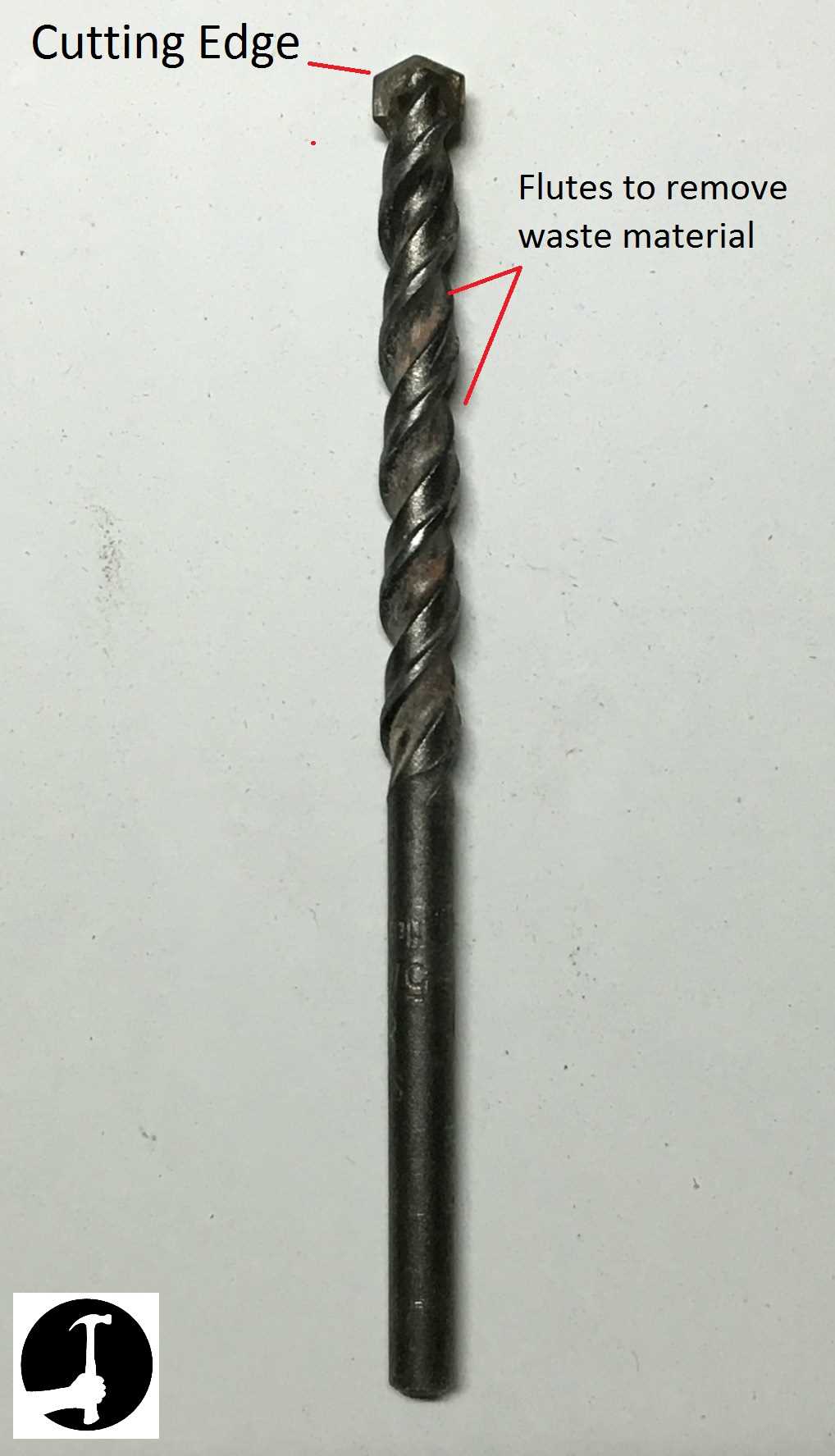
-
Can I drill directly into stucco without cracking it?
Drilling directly into stucco without cracking it can be challenging. It is important to use the right tools and technique to minimize the risk of cracking. Preparing the surface, using proper drilling techniques, and using the right kind of drill bit can help prevent cracking.
-
What type of drill bit should I use for drilling into stucco?
For drilling into stucco, it is recommended to use a masonry drill bit. These drill bits are specifically designed for drilling into hard materials like stucco and concrete. They have a carbide tip that can easily penetrate the surface without cracking it.
-
How do I prepare the surface before drilling into stucco?
Before drilling into stucco, it is important to clean the surface to remove any dirt, debris, or loose stucco. You can use a stiff brush to clean the area around the drilling spot. This will ensure that the drill bit can make a clean and precise hole without any obstructions.
-
What drilling technique should I use for stucco?
When drilling into stucco, it is important to apply steady and even pressure. Start by marking the drilling spot with a pencil. Then, hold the drill perpendicular to the surface and slowly start drilling, applying moderate pressure. Avoid using excessive force or drilling too fast, as this can increase the risk of cracking.
-
What should I do if the stucco cracks while drilling?
If the stucco cracks while drilling, stop immediately. Cracks in stucco can compromise its integrity and may require repair. Assess the extent of the damage and consult a professional if necessary. It is important to address any cracks in stucco to prevent further damage and maintain the appearance of your home.
-
Can I use a regular drill for drilling into stucco?
Using a regular drill for drilling into stucco is not recommended. Regular drills may not have enough power or the right type of drill bit to effectively drill into stucco without cracking it. It is best to use a hammer drill or a drill specifically designed for masonry work.
Expert Recommendations for Successful Stucco Drilling
1. Choose the Right Drill Bit
When drilling into stucco, it’s important to use the right type of drill bit to avoid cracking the surface. Experts recommend using carbide-tipped masonry drill bits. These bits are designed to handle the tough, abrasive nature of stucco and provide clean, precise holes.
2. Use a Proper Drill Speed
Drilling too fast can generate excessive heat and cause the stucco to crack. To prevent this, it’s important to use a moderate drill speed. Start drilling at a low speed and gradually increase it as you go. This will help maintain control and reduce the risk of cracking.
3. Apply Gentle Pressure
When drilling into stucco, it’s crucial to apply gentle and even pressure. Applying too much force can lead to cracks and damage the surface. Use the weight of the drill itself to apply pressure rather than pushing down with excessive force.
4. Mark the Drill Points
Before drilling into stucco, it’s essential to mark the drill points accurately. This will ensure that you drill in the right spot and avoid unnecessary damage. Use a pencil or a marker to mark the exact location where you want to drill.
5. Pre-drill Pilot Holes
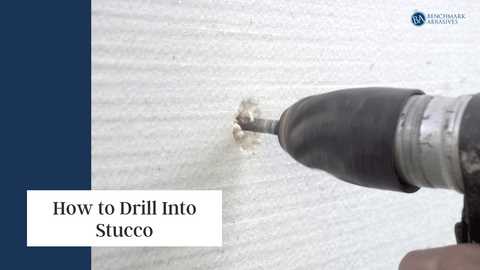
To make drilling into stucco easier and reduce the risk of cracking, experts recommend pre-drilling pilot holes. Use a smaller drill bit to create small guide holes at the marked drill points. This will provide a starting point and help guide the larger drill bit more easily.
6. Keep the Drill Level
It’s important to keep the drill level and straight while drilling into stucco. Tilting or angling the drill can increase the risk of cracks and result in an uneven hole. Use a bubble level or your eyes to ensure that the drill stays level throughout the drilling process.
7. Use Gentle and Controlled Movements
When drilling into stucco, it’s crucial to use gentle and controlled movements. Avoid jerky or aggressive drilling motions, as these may cause cracks. Instead, use steady and smooth motions to penetrate the stucco surface.
8. Clean the Dust and Debris
After drilling, it’s important to clean the dust and debris from the hole. Use a brush or a vacuum to remove any loose particles from the drilled hole. This will help ensure a secure and proper installation of screws, anchors, or any other hardware.
9. Be Patient and Take Breaks
Drilling into stucco can be time-consuming and require patience. It’s important to take breaks to rest your hand, and also to take a step back and assess your progress. Rushing through the process can lead to mistakes and potential damage to the stucco surface.
10. Seek Professional Help if Needed
If you’re not confident in your ability to drill into stucco without cracking it, it’s always best to seek professional help. A professional contractor or handyman will have the expertise and experience to perform the drilling safely and effectively.
FAQ:
Can I drill into stucco without cracking it?
Yes, it is possible to drill into stucco without cracking it. There are some steps you can take to minimize the risk of cracking, such as using the right drill bit and drilling at a slow speed.
What type of drill bit should I use for drilling into stucco?
When drilling into stucco, it is recommended to use a masonry drill bit. These drill bits have a carbide tip that is designed to drill through materials like stucco without cracking or chipping them.
What is the best way to drill into stucco?
The best way to drill into stucco is to start by marking the spot where you want to drill and ensuring that there are no electrical wires or plumbing behind the stucco. Then, select the appropriate drill bit and attach it to a hammer drill. Set the drill to a slow speed and apply gentle pressure while drilling. It is also important to periodically stop drilling and remove any accumulated dust to prevent overheating.
What should I do if the stucco cracks while drilling?
If the stucco cracks while drilling, you can try filling the crack with a waterproof filler or caulk. This will help to prevent any water damage or further cracking. If the crack is significant, it may be necessary to consult a professional for repairs.
Video:









